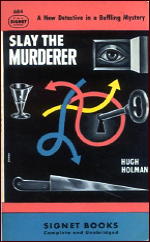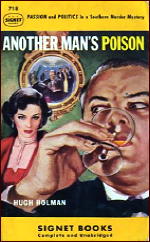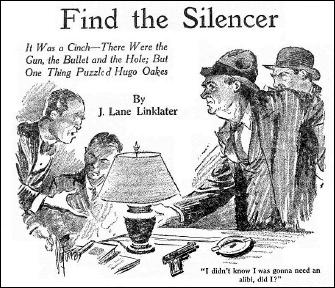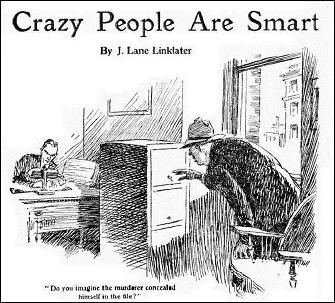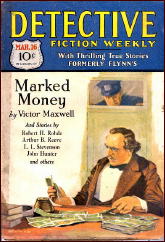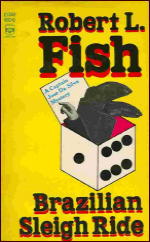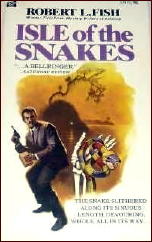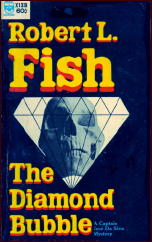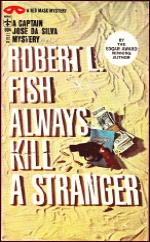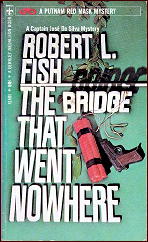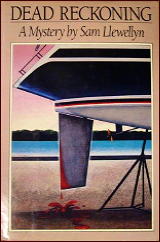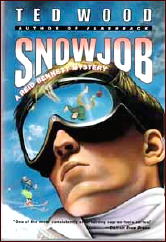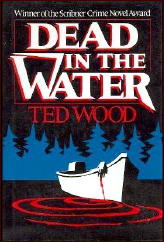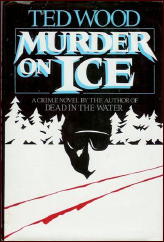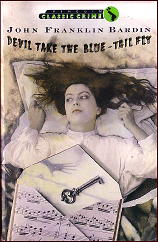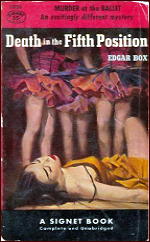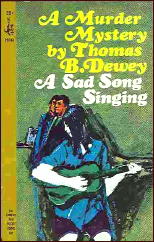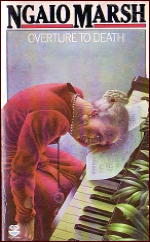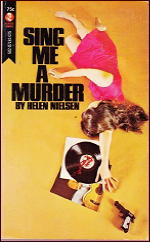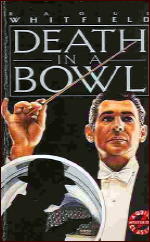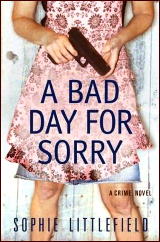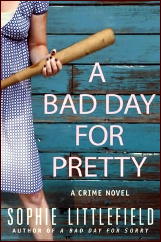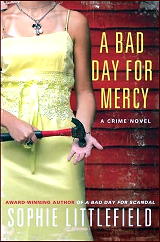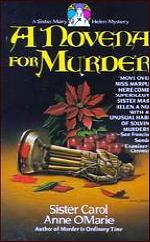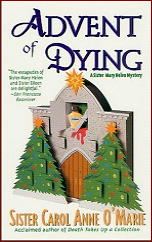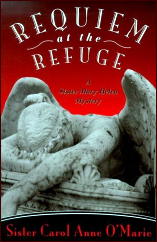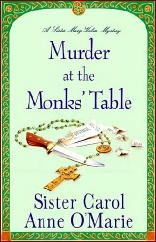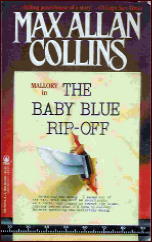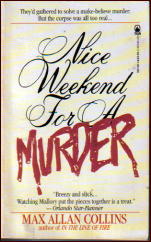PULP AUTHOR CHARLES W. TYLER,
by Victor A. Berch
Charles W. Tyler was perhaps the most prolific pulp writer you never heard of. He was the author of 100s of novelettes and short stories, in all genres, many of which are listed below. He wrote detective stories, adventure stories, railroad stories and westerns, but except to a small handful of enthusiasts, his name is no longer known today.
He is the author of two titles included in Crime Fiction IV, by Allen J. Hubin:
Blue Jean Billy (Chelsea, 1926, hc)
Quality Bill’s Girl (Chelsea, 1925, hc)
The second of these is described as being “three novelets presented as a novel.” Since Tyler wrote six “Blue Jean Billy” stories that appeared in Detective Story Magazine (see below), a strong conjecture would be that Quality Bill’s Girl contains the first three, and Blue Jean Billy contains the final three.
Tyler’s two most prominent series characters in the detective pulps were Big-Nose Charley and Blue Jean Billy Race. Here are descriptions of both, as excerpted from the online website The Pulp Heroes, by Jess Nevins. (Follow the link for more.)
Big-Nose Charley was created by Charles W. Tyler […] appeared in a number of stories, starting with “Big-Nose Charley’s Get Away,†in the 5 April 1917 issue of Detective Story Magazine. […] Charley is a thief who, though occasionally relying on the more artistic forms of crime such as mail fraud, customarily uses strong-arm tactics to get his swag. […] [W]hat kept Big-Nose Charley going for so many years, and what makes his stories remembered fondly today, is the humor within them. The Big-Nose Charley stories are humorous, and meant to be, poking fun of themselves as well as at the genre.
and
Blue Jean Billy Race, the “highway woman of the sea,” was the creation of Charles W. Tyler, a fireman, magazine writer, and draftsman [..] Billy appeared in Detective Story Magazine beginning in “Raggedy Ann” on March 26, 1918 […] [Her father] raised Billy to hate society and its hypocrites and hypocrisies […] Billy is a thief and a pirate, stealing aboard ships to rob the owners and passengers at gunpoint and then slipping over the side and disappearing into the night. She’s not just a thief, though; she’s a thief taking revenge on the evil rich, those liars and cheats who rob from and swindle the poor.
Tyler’s entry in the Crime, Mystery & Gangster Fiction Magazine Index, 1915-2010, compiled by Phil Stephenson-Payne, William G. Contento & Stephen T. Miller (2010), mentions only that he flourished from 1917-1935.
He is also found in the online FictionMags Index, where no dates are given for birth and death, but it is noted that he was born in North Hinsdale, MA and that he should not be confused with Charles Waller Tyler nor Charles Willis Tyler.
In Allen J. Hubin’s massive bibliography Crime Fiction Bibliography, 1700-2000, it is stated he was born in Massachusetts, was a fireman, magazine writer and draftsman.
Armed with these bits of information, I set out to see what I could unearth through my subscription to the databases held by the New England Historic Genealogical Society to determine what information it might have on a Charles W. Tyler, born in Massachusetts prior to 1915 and born in Hinsdale (or North Hinsdale) Massachusetts.
It was only a matter of seconds to learn that no Charles W. Tyler showed up in the Society’s databases.
What was my next step to be?
Having a world-wide subscription to Ancestry.com’s databases, I knew that that was to be my next avenue of research to see what that might produce.
There were loads of Charles W. Tylers, but one that caught my attention was a Charles W. Tyler who lived in Quincy, MA and was described as a novelist in the city directories for 1918 and 1920.
Poking his name into the US Census records from 1900 on up, I was taken by surprise at the entry of a Charles W. Tyler, born 1887 in Hinsdale, New Hampshire. Could it be that there were two Hinsdales? One in Massachusetts and one in New Hampshire and somehow the compilers of the Fictionmags Index and Allen J Hubin’s CFIV had mistakenly assigned the birthplace of Charles W. Tyler to Massachusetts.
To verify this supposition, I turned to Wikipedia and sure enough, it verified that there was a Hinsdale, Massachusetts and a Hinsdale, New Hampshire,
Hinsdale, Massachusetts is in Berkshire County, Massachusetts and is part of the Pittsfield, Massachusetts, statistical area. While Hinsdale, New Hampshire is in Cheshire County, New Hampshire, south of Brattleboro VT near the Pisgah State Park at the border of New Hampshire and Massachusetts.
So, once again I turned to my Ancestry subscription. From previous searches on Ancestry, I knew that someone born in the 1880s had to register for the draft of World War I and I began to explore what might be in that particular database. I entered the name Charles W. Tyler and birthplace New Hampshire and up came Charles Warren Tyler, born 1887 in Hinsdale, New Hampshire and living in Quincy, Massachusetts.
The clinching piece of data was that he described himself as a writer for the Frank Munsey Company in New York. However, his birth date was given as September 1, 1888. Why Mr. Tyler chose to make himself a year younger is anyone’s guess. But it was not an unusual practice, especially with women and oft times men in the public’s eye.
Now, one of the great features of the Ancestry database is that it will suggest other of its databases to examine that relate to this person.
So, in the 1900 US Census, it showed Charles W. Tyler, age 12, born 1887, living in Hinsdale, New Hampshire, living with his mother, Clara, a widow.
In the 1910 Census, Charles W. Tyler, age 22, is shown living at No. 18 George St., Boston, MA as a boarder. His occupation, an artist with a general practice. (This seems to concur with Hubin’s description of him being a draftsman.)
For some reason, he does not show up in the 1920 Census. But in the 1930 Census, Charles W. Tyler, age 42, born in New Hampshire, is living in Glendale, California with his wife, Alice. His occupation is listed as a fiction writer.
And finally, the California Death Index shows that Charles Warren Tyler was born September 1, 1887 in New Hampshire and died April 3, 1952 in Los Angeles County, of which Glendale was a part. His mother’s maiden name was listed as Smith.
In the book A History of the Doggett/Daggett Family, it states that his mother, Clara Smith, was born in Boston Jan. 17, 1850 and had married Olcott B. Tyler of Hinsdale, NH. Their offspring was Charles Warren Tyler.
As an added bit of information, his story “Raggedy Ann,” which had appeared as a short story in Detective Story Magazine, March 26, 1918 was the basis for the silent film The Exquisite Thief, scenario by Harvey Gates and directed by Todd Browning. 6 reels and copyrighted April 4, 1919.
Short fiction [crime and detective stories only]
TYLER, CHARLES W. BNC = Big-Nose Charley; BJB = Blue Jean Billy.
* At Milepost 92, (na) Detective Story Magazine Apr 13 1920
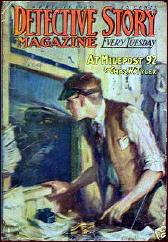
* Big-Nose Charley and Any Old Port [BNC], (ss) Detective Story Magazine Nov 18 1919
* Big-Nose Charley and Deuces Low [BNC], (ss) Detective Story Magazine Apr 6 1920
* Big-Nose Charley and His Jenny [BNC], (ss) Detective Story Magazine Apr 17 1926
* Big-Nose Charley and Human Clay [BNC], (ss) Detective Story Magazine Sep 2 1919
* Big-Nose Charley and Madeyline [BNC], (ss) Detective Story Magazine Aug 15 1925
* Big-Nose Charley and the Double Cross [BNC], (ss) Detective Story Magazine Aug 17 1920
* Big-Nose Charley and the Merry Widow [BNC], (ss) Detective Story Magazine Jun 11 1927
* Big-Nose Charley and the Promised Land [BNC], (ss) Detective Story Magazine Feb 24 1920
* Big-Nose Charley and the Simple Life [BNC], (ss) Detective Story Magazine Oct 2 1917
* Big-Nose Charley and the Tout [BNC], (ss) Detective Story Magazine Oct 14 1922
* Big-Nose Charley at Home [BNC], (ss) Detective Story Magazine Dec 16 1919
* Big-Nose Charley at the Auto Show [BNC], (ss) Detective Story Magazine Jun 4 1921
* Big-Nose Charley at the Opera [BNC], (ss) Detective Story Magazine Feb 13 1926
* Big-Nose Charley at the Policemen’s Ball [BNC], (ss) Detective Story Magazine Apr 16 1921
* Big-Nose Charley at the Races [BNC], (ss) Street & Smith’s Detective Story Magazine Nov 21 1931
* Big-Nose Charley Enters the City of Angels [BNC], (ss) Detective Story Magazine Mar 8 1924
* Big-Nose Charley Finds a Brother [BNC], (ss) Detective Story Magazine Sep 5 1925
* Big-Nose Charley Gets an Interview [BNC], (ss) Detective Story Magazine Dec 10 1921
* Big-Nose Charley Gets His Match [BNC], (ss) Detective Story Magazine Feb 24 1923
* Big-Nose Charley Hops Off [BNC], (ss) Detective Story Magazine Mar 28 1925
* Big-Nose Charley in New Orleans [BNC], (ss) Detective Story Magazine Jul 20 1929
* Big-Nose Charley in the City of Culture [BNC], (ss) Detective Story Magazine Jan 22 1921
* Big-Nose Charley in the Magic City [BNC], (ss) Detective Story Magazine Jun 9 1928
* Big-Nose Charley Leaves His Card [BNC], (ss) Detective Story Magazine Oct 24 1925
* Big-Nose Charley Lends a Hand [BNC], (ss) Street & Smith’s Detective Story Magazine Mar 25 1935
* Big-Nose Charley Meets Some Home Folks [BNC], (ss) Detective Story Magazine Jun 21 1924
* Big-Nose Charley on the Barbary Coast [BNC], (ss) Detective Story Magazine Apr 1 1922
* Big-Nose Charley on the Mt. Division [BNC], (ss) Detective Story Magazine Dec 25 1917
* Big-Nose Charley on the Painted Plain [BNC], (ss) Detective Story Magazine Oct 25 1924
* Big-Nose Charley Rolls His Own [BNC], (ss) Detective Story Magazine Mar 25 1919
* Big-Nose Charley Sits in the World [BNC], (ss) Detective Story Magazine May 5 1923
* Big-Nose Charley Works Alone [BNC], (ss) Detective Story Magazine Sep 11 1917
* Big-Nose Charley, Alias Santa Claus [BNC], (ss) Detective Story Magazine Dec 20 1924
* Big-Nose Charley, Bad Man [BNC], (ss) Detective Story Magazine Jan 29 1918
* Big-Nose Charley, Gentlemun [BNC], (ss) Street & Smith’s Detective Story Magazine Apr 18 1931
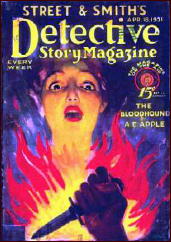
* Big-Nose Charley, Goober Grabber [BNC], (ss) Detective Story Magazine Jan 7 1928
* Big-Nose Charley, Hijacker [BNC], (ss) Detective Story Magazine Oct 11 1924
* Big-Nose Charley, On the Cross [BNC], (ss) Detective Story Magazine Apr 16 1918
* Big-Nose Charley, Racketeer [BNC], (ss) Street & Smith’s Detective Story Magazine Aug 15 1931
* Big-Nose Charley’s Color Blind [BNC], (ss) Detective Story Magazine Jan 21 1928
* Big-Nose Charley’s Derby Hat [BNC], (ss) Street & Smith’s Detective Story Magazine Jul 10 1934
* Big-Nose Charley’s Dog Helps Out [BNC], (ss) Detective Story Magazine Aug 27 1921
* Big-Nose Charley’s Florida Front [BNC], (ss) Detective Story Magazine Mar 24 1928
* Big-Nose Charley’s Get-Away [BNC], (ss) Detective Story Magazine Apr 5 1917
* Big-Nose Charley’s Ha-Ha [BNC], (ss) Detective Story Magazine Jan 10 1931
* Big-Nose Charley’s Safe [BNC], (ss) Street & Smith’s Detective Story Magazine Feb 13 1932
* Big-Nose Charley’s Trick Umbrella [BNC], (ss) Street & Smith’s Detective Story Magazine Jul 25 1935
* Blue Jean Billy and the Lone Survivor [BJB], (ss) Detective Story Magazine Aug 22 1925
* Blue Jean Billy at Fiddler’s Reach [BJB], (nv) Detective Story Magazine Jun 25 1921

* Blue Jean Billy Plays Fair [BJB], (ss) Detective Story Magazine Jan 18 1930
* Blue Jean Billy, Sky Pirate [BJB], (nv) Detective Story Magazine Apr 4 1925; Best Detective Magazine Mar 1937
* Blue Jean Billy, Waif of the Sea [BJB], (ss) Detective Story Magazine Nov 6 1926
* Cold-Hands Kate, (ss) Detective Story Magazine Apr 15 1919
* Dim Trails [Railroad Detective], (na) Detective Story Magazine Feb 19 1921
* The Dub at Eagle Bridge, (ss) Detective Story Magazine Oct 12 1920
* Echo Bowl, (ss) Detective Story Magazine Nov 6 1917
* Expensive Cigarettes, (nv) Detective Story Magazine Oct 26 1920
* Fair Pickin’s, (ss) Detective Story Magazine Nov 3 1928
* Fate Snaps the Shutter, (ss) Detective Story Magazine Jul 15 1922
Best Detective Magazine Feb 1931
* The Foothill Tiger, (ss) Detective Story Magazine Oct 31 1925
* The Green Mask, (nv) Detective Story Magazine Jun 19 1926
* The Haunt of Raggedy Arm, (ss) Detective Story Magazine Oct 7 1919
* The Haunted House on Dungeon Road, (na) Detective Story Magazine Jul 6 1920
* Highway Woman of the Sea [BJB], (na) Detective Story Magazine Aug 19 1922
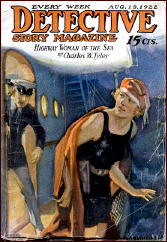
* Hounded by Habit, (ss) Detective Story Magazine Jul 30 1921
Best Detective Magazine Oct 1933
* In Hungry Man’s Canon, (ss) Detective Story Magazine Sep 17 1918
* It Was Signed “Billâ€, (ss) Detective Story Magazine Jun 8 1920
Best Detective Magazine Apr 1933
* Jimmy the Quilt, (ss) Detective Story Magazine Apr 30 1921
Best Detective Magazine Aug 1934
* Judy’s Touch, (ss) Street & Smith’s Detective Story Magazine Oct 17 1931
* A Kiss for Big-Nose Charley [BNC], (ss) Street & Smith’s Detective Story Magazine Oct 25 1934
* Landlubbers, (ss) Detective Story Magazine Apr 8 1922
* Lon Durgin’s Honor System, (ss) Detective Story Magazine Oct 19 1920
* Look Out!, (ss) Detective Story Magazine Apr 7 1928
* Loose Ends, (ss) Detective Story Magazine Apr 9 1918
* The Loot of the Overland, (ss) Detective Story Magazine Apr 20 1917
* The Lying Signal, (ss) Detective Story Magazine Apr 30 1927
* Mountain Misery, (ss) Detective Story Magazine Aug 16 1924
* A Muddy Bird, (nv) Detective Story Magazine Sep 20 1924
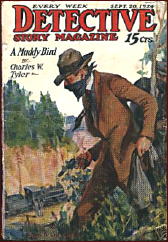
* Nix’s Mate [BJB], (ss) Detective Story Magazine Mar 11 1919
* On the Right Side of the Wrong Street, (ss) Detective Story Magazine May 14 1921
* The Pal in the Pullman, (nv) Detective Story Magazine Nov 29 1924
* Pat Brady — Flatfoot, (ss) Street & Smith’s Detective Story Magazine May 10 1933
* Phantoms of Wolf River, (ss) Detective Story Magazine Oct 29 1918
* Raggedy Ann, (ss) Detective Story Magazine Mar 26 1918
* Raiders from Raggedy Ann, (ss) Detective Story Magazine Jul 16 1918
* Raw Silk, (ss) Detective Story Magazine Dec 2 1919
* Sea Law and Blue Jean Billy [BJB], (nv) Street & Smith’s Detective Story Magazine Nov 14 1931
* Second No. 12, (na) Detective Story Magazine Aug 31 1920
* 77 and a Wink, (ss) Detective Story Magazine Feb 26 1921; Best Detective Magazine Jul 1934
* Shattered Evidence [Railroad Detective], (ss) Detective Story Magazine May 27 1919
* Sidetracked Loot on the Mountain Division, (na) Detective Story Magazine Aug 20 1921
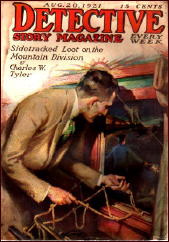
* The Slicker Bandit, (ss) Detective Story Magazine Jan 23 1926
* Stormy Petrel, (ss) Detective Story Magazine Jan 10 1925
* There Were No Clews, (ss) Detective Story Magazine Mar 23 1920; Best Detective Magazine Aug 1932
* The Third Thirteen, (ss) Detective Story Magazine Apr 27 1920
* Too Soft, (ss) Detective Story Magazine Feb 18 1928
* Tramps—Hoboes—Bums, (ss) Detective Story Magazine Apr 25 1925
* Unlucky Luke McCloskey, Gun, (ss) Detective Story Magazine Jun 25 1918
* The Wrong Sucker, (ss) Street & Smith’s Detective Story Magazine Sep 10 1934
ss = short story; nv = novelette; na = novella.
Short fiction [everything else; likely incomplete]
TYLER, CHARLES W. Born in North Hinsdale, Massachusetts; not to be confused with Charles Waller Tyler (1841-1920) or with Charles Willis Tyler (1857-1922)
* The Angel of Canyon Pass, (ss) Railroad Stories Apr 1936; Railroad Magazine Feb 1973
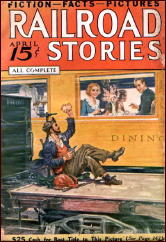
* At Five Paces, (ss) Western Story Magazine Apr 29 1922; Far West Stories Aug 1930
* Back on the Main, (ss) Railroad Man’s Magazine Dec 1931; Railroad Magazine Oct 1964
* Bad Men of Old Hat, (ss) Western Story Magazine Jun 21 1924
* Baldy Sours [Baldy Sours], (ss) Quick Trigger Stories of the West Apr 1930
* Baldy Sours and a Cock-Eyed Cupid [Baldy Sours], (ss) West Jan 8 1930
* Baldy Sours and Burning Brands [Baldy Sours], (ss) West Oct 1 1930
* Baldy Sours and Skates Ajar [Baldy Sours], (ss) Short Stories Oct 10 1937
* Baldy Sours and the Chariot Race [Baldy Sours], (ss) Ace-High Magazine Oct #1 1927
* Baldy Sours and the Day of Judgment [Baldy Sours], (ss) West Nov 13 1929
* Baldy Sours and the Firing Squad [Baldy Sours], (ss) Western Trails Jan 1930
* Baldy Sours and the Fountain of Youth [Baldy Sours], (ss) Ace-High Magazine Jul #1 1928
* Baldy Sours and the Golden Fleece [Baldy Sours], (ss) Ace-High Magazine Jan #1 1927
* Baldy Sours and the Gunsight Boom [Baldy Sours], (ss) Short Stories Jan 10 1929
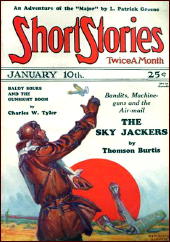
* Baldy Sours and the Human Race [Baldy Sours], (ss) Adventure Mar 1937
* Baldy Sours and the Mexican War [Baldy Sours], (ss) Western Trails Sep-Oct 1929
* Baldy Sours and the Pig Skin Game [Baldy Sours], (ss) Short Stories Apr 25 1929
* Baldy Sours and the Polo Game [Baldy Sours], (ss) Short Stories Jun 25 1935
* Baldy Sours and the Spark of Life [Baldy Sours], (ss) Western Aces Nov 1937
* Baldy Sours and the Tin Horse [Baldy Sours], (ss) Short Stories Dec 25 1934
* Baldy Sours and the Woolly West [Baldy Sours], (ss) Short Stories Apr 25 1937
* Baldy Sours at a Gold Strike [Baldy Sours], (ss) Ace-High Magazine Sep #1 1927
* Baldy Sours Takes the Count [Baldy Sours], (ss) Ace-High Magazine Mar #2 1928; Thrilling Western Magazine Spr 1970
* Baldy Sours, Arabian Knight [Baldy Sours], (ss) Short Stories Nov 25 1928
* Baldy Sours, Bad Man from the West [Baldy Sours], (ss) Quick Trigger Stories of the West Aug/Sep 1930
* Baldy Sours, Badman [Baldy Sours], (ss) Ace-High Magazine Dec #1 1927
* Baldy Sours, Errant Knight [Baldy Sours], (ss) Ace-High Magazine Jun #2 1927
* Baldy Sours, King [Baldy Sours], (ss) Western Adventures May 1931
* Baldy Sours, Promoter [Baldy Sours], (ss) Western Adventures Nov 1931
* Baldy Sours, Rain Maker [Baldy Sours], (ss) Ace-High Magazine May #2 1927
* Baldy Sours, The Late Lamented [Baldy Sours], (ss) Ace-High Magazine Oct #2 1928
* Battle-Call for Johnny Bates, (nv) Star Western Oct 1939
* The Bird That Knew, (ss) Western Story Magazine Feb 3 1923
* The Blue-Dome Mustang, (ss) Ace-High Magazine Jun #2 1923
* The Bo Who Rode No. Two, (ss) Short Stories Sep 25 1929
* The Boothill Parson of Babylon Bend, (nv) Star Western Jan 1944
* Boothill’s Buryin’ Man, (ss) New Western Magazine Dec 1950
* Brand Pirates of the Big Muddy, (nv) Star Western Oct 1941
* The Brand-Blotters Want War!, (nv) Star Western Aug 1942
* Buzzards at Bay, (na) Far West Illustrated Oct 1927
* C-Bar, Grab Your Guns!, (ss) Star Western Jun 1947
* Calico’s “Booty†Contest, (ss) Ace-High Magazine Aug #2 1925
* Cassidy’s Kid, (ss) Short Stories Oct 25 1937
* Clear Iron, (ss) Railroad Stories Feb 1934
* Clear the Iron, (ss) Short Stories Aug 10 1936; Short Stories Apr 1952
* Code of the Morse Man, (ss) Short Stories Nov 10 1947
* The Cop on the Beat, (ss) Short Stories May 10 1934
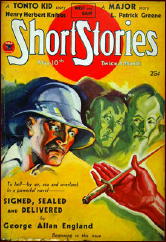
* The Coronation of Baldy Sours [Baldy Sours], (ss) Ace-High Magazine Aug #2 1926
* The Courtship of Baldy Sours [Baldy Sours], (ss) Ace-High Magazine Sep 18 1926
* Cow-Pirates of the Smoky Trail, (ss) Star Western Sep 1939
* Cowboy Sleuths [Baldy Sours], (ss) Ace-High Magazine Aug #1 1927
* Cowboys Amuck, (ss) Ace-High Magazine May #1 1926
* Cowboys at Stove Pipe, (ss) Ace-High Magazine Mar #2 1926
* Crazy Well [Baldy Sours], (ss) Ace-High Magazine Mar #1 1927
* Crossed Wires at Poverty Bend, (ss) Western Story Magazine Mar 19 1921
* Cut Two Notches, (ss) All Western Magazine Nov 1936
* Dead Man’s Bend, (ss) Short Stories May 10 1936
* Dead Man’s Key, (nv) Short Stories Jul 10 1929
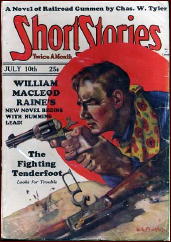
* Derelict Cowman’s Last Stand, (nv) Ace-High Magazine Feb 1938
* The Devil Deals Three Tough Jokers, (ss) Star Western Jul 1947
* Devil Makes a Cowman, (ss) [??] 1939; Fifteen Western Tales Sep 1952
* Diamond Jack of Wyoming, (nv) Western Story Magazine Mar 11 1922
* Double-Breasted Mike, (ss) Railroad Man’s Magazine Dec 7 1918
* Down Sunset Trail, (ss) People’s Magazine Feb 1917
* Down the Smoky Road, (ss) Short Stories Aug 25 1935
* Fast Bullet Man, (na) Fifteen Western Tales Feb 1949
* The Fastest Gun, (nv) Far West Illustrated Apr 1927
* Feud Herd Coming Through!, (nv) Ace-High Magazine Jul 1938
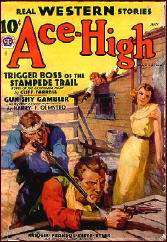
* Fighting Men of the Union Pacific, (nv) Star Western Mar 1942
* A Firin’ Fool, (ss) Short Stories Jul 25 1933
* For the Little Lady, (ss) People’s Magazine May 1917
* Fresh in the West, (ss) Far West Illustrated Nov 1928
* From the Primer of Hate, (ss) Far West Illustrated Magazine Sep 1926
* God of the High Iron, (ss) Railroad Man’s Magazine Mar 1930
* Gun Lord of Poverty Empire, (nv) Star Western Oct 1940
* Gun Rider for the Overland, (ss) 10 Story Western Magazine Nov 1942
* The Gun River Pilgrims, (nv) Star Western Apr 1940
* Gunmen of the Rails, (na) Short Stories Sep 10 1929
* Gunmen of the Rails, (ss) Short Stories Sep 10 1929
* Gunmen’s Trails, (nv) West Mar 2 1932
* Guns of the Graveyard Trick, (na) Short Stories Jul 10 1935
* Gunsmoke Funeral at Yellow Cat, (nv) Star Western Jul 1940
* Hard As Nails, (ss) People’s Favorite Magazine Aug 10 1917
* He Forgot to Pay, (ss) Western Story Magazine Nov 5 1921
* He Knew It All, (ss) Western Story Magazine Jul 18 1925
* Hell in Their War-Sacks! [Dewlap, Wattles and the Hairpin Kid], (nv) Star Western Jul 1945
* Highballing the Moonbeam Trail, (ss) Railroad Man’s Magazine May 1930
* Hiram at a Rodeo [Hiram Pertwee], (ss) Western Story Magazine Oct 8 1921
* Hiram in a Hold-Up, (ss) Railroad Man’s Magazine Apr 1916
* Hiram in No Man’s Land, (ss) Railroad Man’s Magazine Nov 9 1918
* Hiram on a Down-Hill Road, (ss) Railroad Man’s Magazine Feb 1915
* Hiram on the High Seas, (ss) Railroad Man’s Magazine Nov 1918
* Hiram on the Yellowstone Trail [Hiram Pertwee], (ss) Western Story Magazine Dec 31 1921
* Hiram Rides “Parson Pickaxâ€, (ss) Western Story Magazine Mar 5 1921
* Hiram Ropes a Kitty Cat [Hiram Pertwee], (ss) Western Story Magazine May 7 1921
* The Horned Toad Detour, (ss) Railroad Man’s Magazine Nov 1930
* Hot Shot (with Griff Crawford, E. S. Dellinger, James W. Earp, William Edward Hayes, John Patrick Johns, Gilbert A. Lathrop, A. Leslie, John A. Thompson & Don Waters), (ss) Railroad Stories Apr 1934
* Igo, the Killer, (ss) Western Story Magazine Sep 24 1921; Far West Stories Mar 1930; Western Winners May 1935
* The Iron Warpath, (nv) Short Stories Oct 10 1943
* Johnny Bates Adopts a War!, (ss) Star Western Dec 1939
* Johnny Bates’ Running-Iron Rebellion, (nv) Star Western Dec 1944
* Johnny Gosh, Top Rope, (ss) Western Story Magazine Sep 10 1921
* The K.K.K., (sl) National Magazine Jul 1906
* The Kid from Gunhammer Vreek, (na) Dime Western Magazine Jul 1946
* Killer Country, (nv) Street & Smith’s Western Story Magazine Oct 15 1932
* The Killer of Canyon Diablo, (nv) Wide World Adventures Oct 1929
* The Killer of Canyon Diabolo, (nv) Ace-High Magazine Apr #2 1923
* The Last Witness, (nv) Short Stories Feb 25 1937; Short Stories Aug 1951
* Little Joe, (ss) Short Stories Jan 25 1938
* Make Way for the Eastbound, (ss) Railroad Magazine Oct 1954; Railroad Magazine Feb 1974
* The Male of the Species, (ss) Breezy Stories Sep 1916
* A Message from Mescal, (ss) Western Aces Jan 1938
* Mohave Buckaroo, (nv) Short Stories Mar 10 1939
* A Mountain Division Man, (ss) New Story Magazine Jul 1914
* The Murder Syndicate, (nv) Argosy All-Story Weekly May 12 1923
* Night Operator, (ss) Railroad Magazine Jan 1971
* Night Trick, (ss) Railroad Magazine Jan 1953
* No Cattle Sold in Hell, (nv) Ace-High Magazine Jun 1938
* No Law on the Tonto Rim, (na) 10 Story Western Magazine Dec 1941
* Old “Harqua Hala†Bill, (ss) Ace-High Magazine Sep #2 1923
* On First 303, (ss) The Railroad and Current Mechanics Oct 1913
* On Time!, (ss) Railroad Man’s Magazine Mar 1931
* The Ora Hanna Stampede, (ss) Ace-High Magazine Jan #1 1926
* Out Where the Worst Begins, (ss) Ace-High Magazine May #1 1928
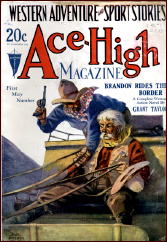
* Outlaw Frontier, (na) Short Stories Jun 10 1932
* Outlaws of Milestone Mesa, (na) Western Story Magazine Apr 30 1921
* Over the Big Divide, (ss) Western Story Magazine Jun 3 1922
* Owlhoot Roundup at the Horned Moon, (nv) 10 Story Western Magazine Dec 1940
* The Parson Buries His Dead, (ss)
* The Parson of Owlhoot Junction, (nv) Star Western Nov 1943
* Parson Pickax in the Pictures, (ss) Ace-High Magazine Mar #2 1924
* Peelers in Peril, (na) Western Story Magazine Jan 21 1928
* Petticoat Doolittle’s Emancipation, (ss) Ace-High Magazine Jun 1 1926
* Pirates’ Trail, (na) Western Story Magazine Mar 9 1929
* Pistoleers West of the Pecos, (ss) Dime Western Magazine Jul 1950
* Ragtown Shall Rise Again!, (nv) Star Western Oct 1945
* Railroad Drummer, (na) Railroad Stories Dec 1934
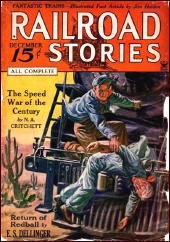
* Railroad Engineer, (ss) Railroad Stories Oct 1933
* Railroad Romeo, (ss) Short Stories Mar 25 1937
* Rails West, (ss) Short Stories Sep 10 1944
* Range of Missing Men, (na) Dime Western Magazine Feb 1951
* Ranger Wanted—in Hell!, (nv) Star Western Mar 1944
* The Rattler Racket, (ss) Railroad Man’s Magazine Aug 1931
* The Reign of Baldy Sours [Baldy Sours], (ss) Ace-High Magazine Feb #1 1927
* Reply to Johnson’s letter, (ms) Big-Book Western Magazine Jun 1949
* Ribbons of Iron, (ss) Top-Notch Oct 15 1921
* The Road to Yesterday, (ss) Railroad Stories Feb 1936
* The Rustlers’ Union Votes for War!, (nv) Star Western Mar 1941
* Shoddy Mike’s Last Stand, (ss) Western Story Magazine May 14 1921
* Shoot ’Em Quick—Plant ’Em Fast!, (nv) Star Western Nov 1947
* The Shuffle Trick, (ss) All-Story Weekly May 22 1920
* The Sky Hoss, (ss) Ace-High Magazine Mar #1 1926
* Smiling Smith Sits In, (ss) Railroad Man’s Magazine Aug 1930
* Smoke Blue Ranch, (na) Western Story Magazine Aug 27 1921
* Smoky Smith—Sheriff, (nv) West Apr 15 1931
* Star and Six-Gun, (sl) West Dec 10, Dec 24 1930, Jan 7 1931
* The Star on Outlaw Trail, (ss) All Western Magazine Jan 1937
* Strange Guns Invade the Rim Rock, (ss) Star Western Oct 1937
* “Sunset†Jones, (nv) Western Story Magazine Feb 10 1923
* Telegraph Joe, (ss) Western Story Magazine Jul 16 1921
* The Tenderfoot of Buzzard Flat, (nv) Western Story Magazine Oct 7 1920
* The Terrible Trail to Dodge, (nv) Zane Grey’s Western Magazine Jun 1953
* Texas Sends ’Em Tough!, (na) Big-Book Western Magazine Mar 1949
* There’s Hell in Johnson Country, (na) 10 Story Western Magazine Apr 1942
* They’re Shipping Hell from Texas!, (na) Star Western Jan 1947
* Those Grave-Digging Brand-Hawks!, (nv) Star Western Jul 1943
* Those Three Texas Hellions, (nv) Star Western Jun 1943
* Three from Texas, (nv) Dime Western Magazine Jan 1952
* The 3-Cross Button Rides Gun, (ss) Ace-High Magazine Nov 1938
* “To Hell with the Rangers!â€, (nv) Star Western Jan 1943
* Too Many Guns, (na) Western Story Magazine Jul 21 1923
* Track Clear at Algodones, (ss) Argosy Sep 1945
* Track Clear!, (ss) Argosy Nov 1943
* Trouble at Cottonwood Station, (ss) Argosy Jan 1944
* Trouble in the Canyon, (ss) Railroad Magazine Oct 1952
* Trouble Rides from Texas!, (ss) 10 Story Western Magazine Dec 1949
* Two-Gun Justice (with W. D. Liberty), (nv) Lariat Story Magazine Sep 1926; Cowboy Story Magazine Apr 1927
* The Walking Fool, (ss) Western Story Magazine Apr 2 1922
* War Call of the Singing Wire, (na) Ace-High Western Stories Jan 1942
* War of the Branding Iron, (na) Short Stories Nov 25 1935; Boston Sunday Globe Magazine Dec 10 1939
* Welcome to Bullfrog, (ss) Western Story Magazine Mar 28 1925
* The Western Union Kid, (ss) Railroad Stories May 1934
* When Hoboes Rode, (ss) Railroad Stories Jun 1935
* When Rangers Ride the Death-Watch, (nv) Star Western Jun 1944
* When the Chips Were Down, (ss) Railroad Magazine Jul 1945; also as “When the Chips Are Down,” Railroad Magazine Dec 1968
* When the Lights Are Green, (ss) Short Stories Aug 25 1936
* Wolves of the Iron Trail, (sl) West Sep 2, Sep 16, Sep 30 1931
SOURCES:
The Crime Fiction Index, by Phil Stephensen-Payne, William G. Contento and Stephen T. Miller (CD-ROM, Locus Press).
Crime Fiction IV, by Allen J. Hubin (CD-Rom, Locus Press).
The FictionMags Index.
The Pulp Heroes, by Jess Nevins.
With a special note of gratitude to Phil Stephensen-Payne for not only generously allowing such extensive usage of the bibliographic material above, but also for letting us use his wonderful Galactic Central website as a source for the cover images you see here. Thanks, Phil!
© 2012 by Victor A Berch
